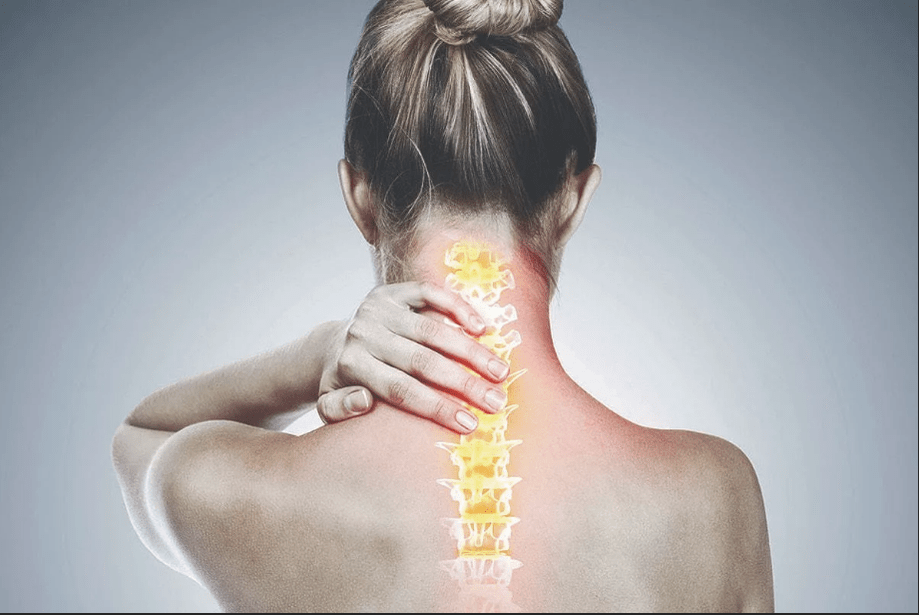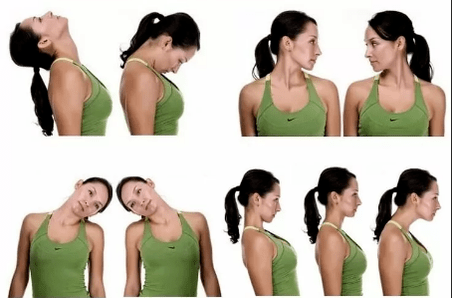Cervical osteochondrosis is a progressive dystrophic and deigenerative damage to the intervertebral discs in the cervical region of 1-7 spine.

As a result of cervical osteochondrosis, deformation, exhaustion, and then damage to the spine.It disrupts normal blood supply and nervous conduction in the neck and areas that are rooted in the nerves of the cervical nerves.
Cervical osteochondrosis can be isolated or combined with osteochondrosis - chest, lumbar and sacred.
Causes
The causes of dystrophic and degenerative changes in the intervertebral discs have not yet been studied.It is assumed that osteochondrosis is a confirmation of an elderly phenomenon.It is found even in children and adolescents.
There are many factors that develop osteochondrosis.This includes:
- Sedomer and sedentary lifestyle,
- Types of work on the neck with static loading,
- Excess weight, insufficient physical development,
- Dysplastic processes of connective tissue,
- Blood circulation disorders in the neck,
- Neck injuries
- Scoliosis, posture defects, uncomfortable pillows and mattresses,
- Hereditary predisposition, metabolic defects.
Symptoms of cervical osteochondrosis
Cervical spine, skeletal characteristics, directness, as well as the large size of the head, are particularly vulnerable to the development of osteochondrosis-the vertebrates are smaller than other parts of the spine, and the muscle frame is not very pronounced.
The most characteristic symptom of patients complain of - pain in the cervical region.Depending on the zone of injury, the pain may be localized
- In the collar and shoulder;
- During cervical spine;
- Chest on the anterior surface.
Pain for cervical osteochondrosis is due to the characteristics of the cervical region.
The first signs of cervical osteochondrosis are minor and small specific:
- Pain in the neck of the evening,
- The feeling of gravity in the back, headache in the back of the back zone,
- Feeling bumps or quarrels in the shoulders and hands,
- The crystal on the neck, when turned on, pressed the vertebrates.
Leading Symptoms:
Herbal-distonic
- Quite severe pain in the neck and especially in the back of the head;
- Pain occurs in one condition after a long stay (for example, after sleep);
- The neck muscles are constantly tense;
- There are difficulties in leaving the party;
- On the affected side, the fingers are limited in movements.
Once the spine arteries are compressed, neurological manifestations are noted: headache, nausea, discoloration.
Spinal symptom
The pain is localized on the left side.
This type of pain should be distinguished from pain in an angina pectoror (with angina pectoral, nitroglycerin is released, osteochondrosis - no).
With the gradual disruption of the structure of the intervertebral discs, they contract (compress) and disrupt the root of the nerves, as well as narrowing or disruption of the arteries and veins that occur in the area of the vertebral organs.
This results in the formation of special syndromes - radical and ischemic.
- First cervical spine defeat (C1): Disorders affect the back of the head, reducing skin sensitivity;
- Damage C2 gives pain in the crown of the crown and on its back;
- Damage to the C3 causes pain in the neck, reducing the sensitivity of the tongue and sub -muscles, in some cases with decreased speech and loss of tongue control;
- The defeat of C4 and C5 gives pain in the shoulder and claws, in the tone of the head and neck muscles, in the heart of the heart, respiratory disorders and pain;
- Defeat C6 is most often happening, giving pain in the shoulder blade, forearm, fingers, skin sensitivity:
- Defeat C7 gives rise to similar symptoms in the neck, shoulder to the shoulder, back of the hand, impaired hands strength and reflexes.
Blood circulation disorders due to compression of vessels in the cervical spine, giving headaches in migraine, severe dizziness, visual impairment and ears, shiny owls in front of the eyes, disorders of autonomic functions.
There may be manifestations of heart syndrome with compressive heart pain, lack of air and heart rate, rhythm disorders.
Complications
There are serious complications of cervical osteochondrosis
- Protrusion of intervertebral discs with hernia (protrusion);
- Intervertebral disc breakdown with disorders of the nerves and blood vessels, it is possible to contract the spinal cord, which can lead to death;
- There may also be radiculopathies (root injuries), the formation of osteophytes (spikes on the vertebrates) with the manifestations of paresis and paralysis.
Diagnostics

In the presence of the above complaints, an orthopedic physician or neurologist should be referred.
First of all, the doctor will evaluate mobility and pain, sensitivity and other functions in the neck.Then, radiography of the cervical spine will be required in several predictions, if necessary, computing tomography or magnetic resonance scan with hernia suspicion.
In the case of circulatory disorders, revencephalography and pulp are required.
Treatment of cervical osteochondrosis
The same symptoms can be signs of various diseases, and the disease may not occur according to the manual.Don't try to treat yourself - consult your doctor.
Today, there are both traditional and extraordinary methods for the treatment of osteochondrosis in the cervical spine.
Conservative methods are mainly used:
- Symptomatic therapy with analgesics (baralgin, analgin) to relieve pain syndrome
- Non -series (diclofenac, indomethacin, meloxicam) Take anti -enchic medication -to alleviate inflammation and edema
- To eliminate muscle cramps, antispasmodics are used -not -shpu, drugs to improve blood circulation -trental.
In the treatment of cervical osteochondrosis, substances that restore the structure of the intervertebral discs - Theflex.
The course of vitamin B therapy has been shown, external products are used for therapy - gels and ointments, creams with antipheramic, warming and analgesic components - voltaren.Stimulants of the intervertebral discs regenerate - Teraphlex or chondroxide.
When treating cervical osteochondrosis, it is recommended to wear a special collar (chance collar).
Complications of cervical osteochondrosis with vertebrate hernia, which disrupt sensitivity and blood circulation, can be treated immediately.
The duration of treatment depends on the neglect of the condition, as osteochondrosis is a progressive chronic disease.Treatment can be long, and prophylactic courses are performed for life.
Proper nutrition will help to relieve the condition of osteochondrosis.Read more information on osteochondrosis on diet principles in our separate article.
Exercises for the treatment of cervical osteochondrosis:

- Smoking itself: In the right spinal position, it is necessary to maximize shoulders as much as possible, and the neck should be pulled.It is necessary to have at least 10 approaches at least 3 times a day.
- Mass -Take your neck with a towel, grab it with the ends and wrap them alternately, spreading the neck muscles.In this case, it is necessary to ensure that the towel does not close along the neck.
- Gymnastics for the cervical region for osteochondrosis: a slight neck lift, as well as heads and tilting.At one time, 5-7 inclinations are carried out in each direction.This exercise is most useful after the cervical spine.
Prevention
The foundation of the cervical spine is a strong and healthy back, physical activity, a comfortable bed with anatomical pads and mattresses, proper posture and proper nutrition.
It is worth avoiding neck injuries and weight gain.It is necessary to prolong sitting with rest periods and warm.


























